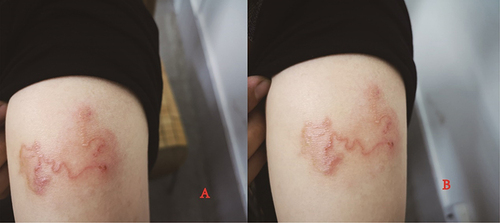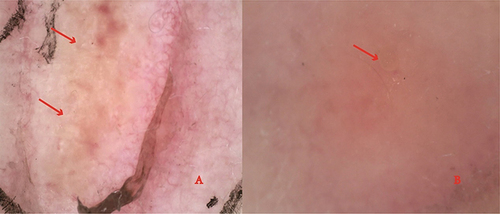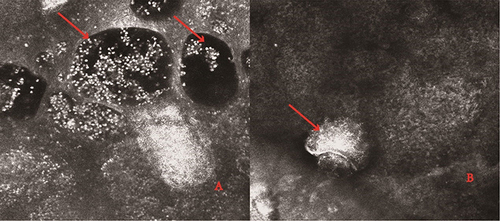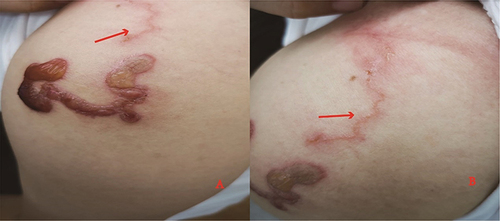Figures & data
Figure 1 Clinical presentation of the patient on admission (A and B) dark red, linear, spiral patches on the lateral side of the upper arm).

Figure 2 Dermoscopy images: (A) a tunnel with red arrows formed by larva migration. (B) high refractive dots with red arrows, which may be larval body or paws.

Figure 3 Reflectance confocal microscopy images: (A) tunnel in the stratum corneum or granular layer, dark oval structures corresponding to vesicles with red arrows. (B) larval body and claw-like structures with red arrows.



